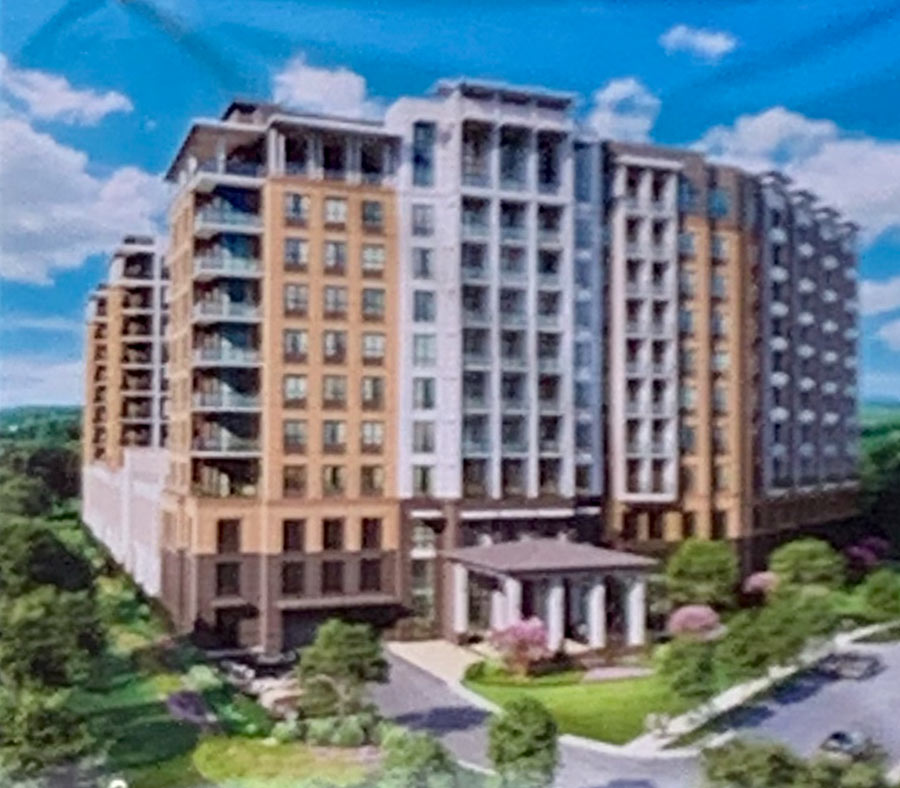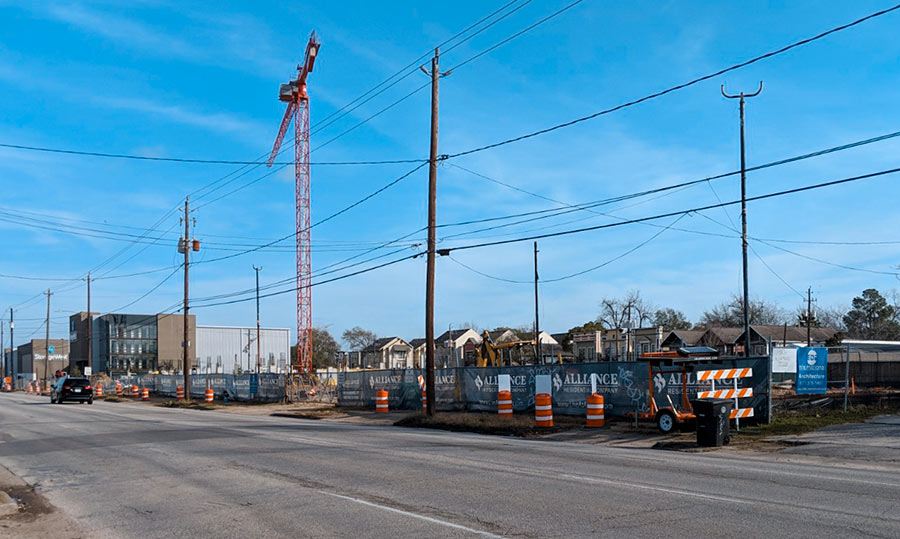Following his report earlier this week on a newly proposed city program that would provide tax incentives for the redevelopment of dilapidated properties, the Chronicle‘s Mike Morris put together a couple of maps identifying all Houston structures with existing “repair, demolish, or secure” orders issued by the city’s Buildings and Standards Commission. The zoomable and clickable map of commercial properties — including apartment buildings of 4 or more units — is shown above. Properties marked with the pin-shaped tags had orders filed in 2013 or 2014. That means redevelopment of those properties would be more likely to qualify for the city’s new tax break — because in order to be accepted into the program, applications would have to be filed within a year of the property receiving a repair-or-demolish order. (The intent is “to prevent slumlords who have sat on shoddy buildings for years from qualifying,” Morris explains.)
The tax-break program isn’t intended to cover residential properties tagged with orders to raze, secure, or bring up to code, but Morris put together a second map showing residences of 3 or fewer units that had received the same kinds of notices from the city:
***
Click on each dot or tag to see details of the order.
- See the city’s blighted properties (w/ interactive maps) [Houston Politics]
- City eyes tax break for razing blight [Houston Chronicle ($)]
Maps: Houston Chronicle





Very funny CoH. Put out a map of our properties.
Oops. I forgot to add… Seriously this is a really good idea. But beyond tax breaks the city needs to assure new buyers that the process of getting into compliance won’t be overly burdensome. Often dealing with the city on compliance is the reason these properties fall into disrepair. People don’t want to bother. So a tax break alone might not do it. They need to offer a hassle break.
.
However, the reason I really like this is often you are “penalized” for fixing up a property via increased tax value. On our Holman property, the value of the building went up 2,500%! IN ONE YEAR! Talk about an increase. Granted it was very low before we bought it but come on… Maybe just double the value after the first year. Or triple it. Or x10. But raise it 25x? Yikes.
A nice idea, but I assume this is a work in progress, since there’s not a single residential property shown in the area bounded by 610, 59 and 288.
The Demolition credits are a wonderful start, but the City should also offer a 2% bonus to Low Income Housing Tax Credits if they rehabilitate or reconstruct existing housing. A housing project that qualifies for HUD’s 9% LIHTC would get 11% credits if it’s a rehab in Houston. We have A TON of older apartment complexes that aren’t so awful they need to be demolished, but are in pretty lousy shape. Demolition tax credits won’t address these complexes. Sweetening the pot for tax credited housing just might. And if they are careful in which complexes are eligible for the bonuses, neighborhood opposition shouldn’t be an issue.
The program could be logically expanded by simply limiting how quickly appraised value can be raised each year (the problem Cody described). Then everyone has an incentive to improve their property regardless of an often arbitrary city designation. The peppering of red dots on that map doesn’t even begin to cover buildings the average person would consider blighted.
Looking at the first map I was like “There has got to be more than that in the 5th ward” Then i looked at the second map and was like “Good golly miss molly”
Some of these are already demolished. For example, 2301 McKinney has been gone for a while, maybe a year. Wonder if this is old data?
@Eric
Yeah, how old is this data? Is this supposed to let Houstonians know the current problem or what it used to be 3 years ago?
.
Looking at the ones near downtown (the first map), there are at least 4 buildings that aren’t even there anymore. How many more have been cleaned up but not demolished?
Cody, that really seems very wrong. Rehabbing older properties that are still in condition to do so should be encouraged not punished.
@ Eric: Sometimes people demolish buildings without pulling a permit or officially disconnecting from utilities. That’s a possibility and I’ve had it come up in my bids on properties on multiple occasions. And also, I’m the sort that has tended to buy fucked-up properties from unsophisticated sellers, so there ya go. (It wouldn’t surprise me at all if the City’s left hand didn’t always know what it’s right hand were doing, in addition to that.)
So…has anybody aside from myself noticed that this map (and especially the map of residential properties) serves as a really good proxy for where black people live in Houston? I’m not blaming it on black people as individuals as the determinant factor per se; it could be their city councilmembers which are racially gerrymandered; or it could be that city bureauc
Sorry, my cat pressed “Post Comment” prematurely.
…bureaucrats either intentionally or unintentionally draw up policies that disproportionately impact black communities.
There are a whole lot of non-linear approaches to explain why it is the way it is, so who’s to say? But. It seems like somebody needed to say it. This is a map of where black people live.
Niche,
Unfortunately this is a map where black and Hispanics live. Gerrymandering is an urban and rural issue; Texas state republicans gerrymandered rural areas to keep in power and democrats did the same to urban areas, but with less power.
http://www.houstontx.gov/council/maps2010/b.pdf
District B Councilman
Cody I think your statistics a just a bit misleading on the Holman property, The overall value of the property rose 13% between 2012 and 2013 and your tax bill went from $19891 to $21279 or a 7% increase. You should let everyone know that HCAD had the 56 unit apartment building valued at $4000 and increased its value to $100,754 which is roughly $1800 per unit (and the land value stayed the same). Seems like you are crying foul over nothing as one months rent at $550 covers the yearly unit prorated tax of $380. You are hardly being penalized.
I would love someone to do something with: 5503 Fulton St, Houston, TX, 77009 It is right on the rail line, has no front door, and is full of beer bottles and who knows what else. I have occasionally seen vagrants in it.
I also really like ZAW’s 2% bonus to Low Income Housing Tax Credit properties idea! There is a big need to preserve affordable housing, and it seems like the older apartment complexes keep getting torn down for crazy luxury projects instead of places that the existing population might be able to afford.
Cody, If your apartment property is 56 units, then HCAD is running it based on an income valuation model, not according to a cost approach to market value. The cost approach adds the value of the land to the depreciated value of the improvements. The income approach doesn’t give a rat’s ass about the land value, and land value only becomes relevant when the capitalized stream of income is worth less than the land. (And then HCAD will defend the land value in a totally nonsensical manner.) So yes, in this instance JT is correct that it’s that 13% figure that is the one that is relevant.
However, any of your other properties that have twenty or fewer units would be subject to the cost approach. You should be very pissed off about that because it tends to result in a much higher valuation per unit than for 21+ unit complexes.
@TheNiche,
I don’t claim to understand all the racial dynamics of blight, but one of them is the difficulty of getting loans from banks to buy or rebuild homes. The Johnson Family in South Union that was featured on Extreme Home Makeover are middle class folks who chose to live in the ~750sq ft house that belong to their parents. They tried to get a loan to expand or rebuild their house, but because of the terrible state of housing stock, and no comparables in the neighborhood, no one would give them a loan to improve their house.
Their story was covered on swamplot and their daughter Jessica made a great story about their house on Hear Our Houston: http://hearourhouston.com/tour/the-transformation-jessica-johnson/
Other thoughts: There is a significant amount of outmigration of black population from inner city black neighborhoods to places like Pearland, Missouri City and other suburbs. Klienberg from Rice has written about this in past, but I can’t locate this easily. This happens in hispanic neighborhoods some too, but new immigrants seem quicker to move in?
I wonder if there is underreporting of blight in hispanic neighborhoods? The Eastex Jensen neighborhood shows much less abandoned properties than I would have expected, and so does Near Northside, Second Ward and Magnolia Park.
Yuk it up all the way to the bank, Cody.
JT: wasn’t trying to be misleading. I tried to be clear and state that the hcad BUILDING value went up 25x. Granted it was comically low before and is still – truth be told – comically low now. I’ve just never seen such a drastic year over year increase. And at the time of new appraisal most of the work we did was unit interiors so I’m not sure how they knew about the improvements.
.
TheNiche: hcad is making some pretty big assumptions to conclude a 25x increase in income. The property is doing better, but not THAT much better :)
.
C.l.: um, I’m not yucking it up anywhere, but thanks for the advise?